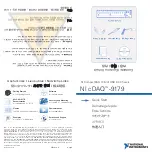
1-11
Cisco ASA Series CLI Configuration Guide
Chapter 1 Configuring AAA Servers and the Local Database
Configuring AAA
Task Flow for Configuring AAA
Step 1
Do one or both of the following:
•
Add a AAA server group. See the
“Configuring AAA Server Groups” section on page 1-11
•
Add a user to the local database. See the
“Adding a User Account to the Local Database” section on
.
Step 2
(Optional) Configure authorization from an LDAP server that is separate and distinct from the
authentication mechanism. See the
“Configuring Authorization with LDAP for VPN” section on
.
Step 3
For an LDAP server, configure LDAP attribute maps. See the
“Configuring LDAP Attribute Maps”
Step 4
(Optional) Distinguish between administrative and remote-access users when they authenticate. See the
“Differentiating User Roles Using AAA” section on page 1-29
Configuring AAA Server Groups
If you want to use an external AAA server for authentication, authorization, or accounting, you must first
create at least one AAA server group per AAA protocol and add one or more servers to each group. You
identify AAA server groups by name. Each server group is specific to one type of server: Kerberos,
LDAP, NT, RADIUS, SDI, or .
Guidelines
•
You can have up to 100 server groups in single mode or 4 server groups per context in multiple mode.
•
Each group can have up to 16 servers in single mode or 4 servers in multiple mode.
•
When a user logs in, the servers are accessed one at a time, starting with the first server you specify
in the configuration, until a server responds. If all servers in the group are unavailable, the ASA tries
the local database if you configured it as a fallback method (management authentication and
authorization only). If you do not have a fallback method, the ASA continues to try the AAA servers.
Summary of Contents for 5505 - ASA Firewall Edition Bundle
Page 28: ...Glossary GL 24 Cisco ASA Series CLI Configuration Guide ...
Page 61: ...P A R T 1 Getting Started with the ASA ...
Page 62: ......
Page 219: ...P A R T 2 Configuring High Availability and Scalability ...
Page 220: ......
Page 403: ...P A R T 2 Configuring Interfaces ...
Page 404: ......
Page 499: ...P A R T 2 Configuring Basic Settings ...
Page 500: ......
Page 533: ...P A R T 2 Configuring Objects and Access Lists ...
Page 534: ......
Page 601: ...P A R T 2 Configuring IP Routing ...
Page 602: ......
Page 745: ...P A R T 2 Configuring Network Address Translation ...
Page 746: ......
Page 845: ...P A R T 2 Configuring AAA Servers and the Local Database ...
Page 846: ......
Page 981: ...P A R T 2 Configuring Access Control ...
Page 982: ......
Page 1061: ...P A R T 2 Configuring Service Policies Using the Modular Policy Framework ...
Page 1062: ......
Page 1093: ...P A R T 2 Configuring Application Inspection ...
Page 1094: ......
Page 1191: ...P A R T 2 Configuring Unified Communications ...
Page 1192: ......
Page 1333: ...P A R T 2 Configuring Connection Settings and QoS ...
Page 1334: ......
Page 1379: ...P A R T 2 Configuring Advanced Network Protection ...
Page 1380: ......
Page 1475: ...P A R T 2 Configuring Modules ...
Page 1476: ......
Page 1549: ...P A R T 2 Configuring VPN ...
Page 1550: ......
Page 1965: ...P A R T 2 Configuring Logging SNMP and Smart Call Home ...
Page 1966: ......
Page 2059: ...P A R T 2 System Administration ...
Page 2060: ......
Page 2098: ...1 8 Cisco ASA Series CLI Configuration Guide Chapter 1 Troubleshooting Viewing the Coredump ...
Page 2099: ...P A R T 2 Reference ...
Page 2100: ......










































